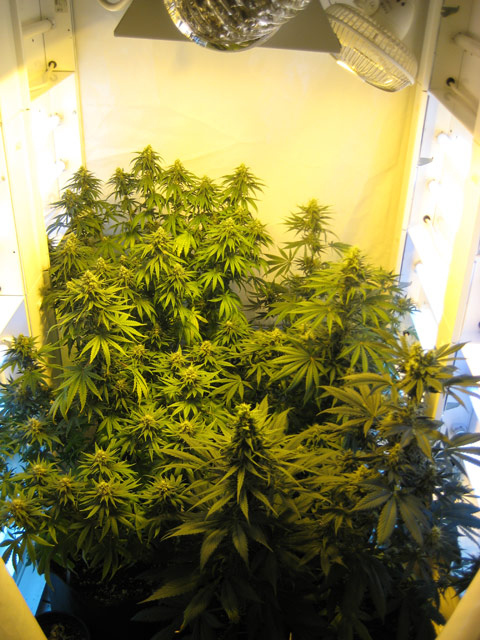Benjammin'29201
Member
I've got a beautiful Black Widow female from Mr. Nice thats just started her 6th week of flower (she'll go minimun 10 wks), and I just hooked up a 10.0 UVB 26w CFL reptile light in the corner of my 400w hps reflector. Its on a seperate timer to be on the middle four hours of my 12 hour light cycle. I was looking to add some uvb the last month of flower to get the extra trichome production that everyone wants.. My questions are exactly how far from the plant is best to have this CFL, and since its only realy hitting one side should I move it around or get another seperate 26w CFL for the other side? Or would that be too much uvb...
Please Help!!
Please Help!!




